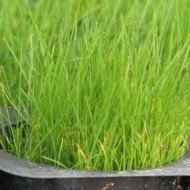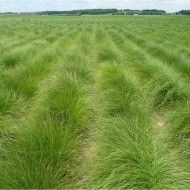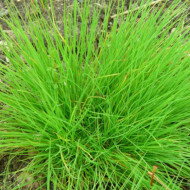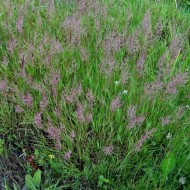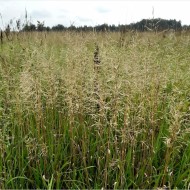How to grow a lawn from bent grass: expert advice
Content
General description of the culture
Shoot-forming bent (Agrostis stolonifera) is a perennial ornamental grass with a well-developed, branched root system extending to a depth of 10 cm. The leaf plates are narrow, pointed, with a smooth surface and slightly rough edges. During flowering, the grass throws out loose inflorescences-panicles of light shades. Thin antennae up to half a meter long extend from the bushes with a diameter of 0.3 m. They take root quickly, having time to cover a fairly large area during the season.

Thanks to vegetative shoots, the culture grows very actively, forming a thick emerald green carpet. The plant does well in the regions of central Europe, as well as in the south of the continent.
Varieties and types of bent grass
The unpretentious lawn grass quickly became popular among European gardeners. Today, botanists know about a dozen varieties of this decorative cereal. Some of them are natural botanical species, others were bred specifically for decorative landscaping. Read on for a detailed description of the most common varieties.
Giant
It is a loose, tall bushes up to 1.5 m high. The leaves are long, narrow, ranging in size from 5 to 20 cm with a width of 3-8 mm. During the growing season, which lasts from late March to early November, panicles 10-25 cm long are formed on flexible vertical stems. The giant bent grass is quite winter-hardy and resistant to diseases. In its natural environment, it occurs on the banks of water bodies, meadows or along the roadside.
Filiform, or thin
This species is characterized by sprawling low-leafed bushes 0.5-0.8 m high. Inflorescences are loose, up to 12 cm long and 30-70 mm wide. The slender bent retains its decorative qualities from early spring to late October. Differs in frost resistance, tolerates drought well, is not demanding to care, however, it needs the timely removal of antennae. Natural habitat - near rivers or lakes, in low-grass meadows or depleted fields.
White
A loose-growing variety that grows no more than 1 m. Despite good germination, after mowing the lawn slows down its growth, growing less actively. Flowering begins in the second year, when the white bent leaves panicles 10-25 cm long and about 15 cm in diameter. The vegetative period lasts from mid-April until the first frost. In nature, it occurs near natural water sources, along roads, as well as in open glades.
Doggy
Low-growing variety no more than 0.3 m in height. The bushes grow lush, densely leafy. The variety is characterized by a late growing season, and therefore the lawn begins to turn green only in the first decade of May.The field bent retains its decorative appearance until the middle of autumn, perfectly tolerating drought and the first frosts. Natural habitat - wetlands, river banks, forest belts, wetlands or flooded fields.
Cromie
The most popular type of lawn used for covering sports fields and parks. The main difference from the common bent grass is the maximum level of mowing, equal to 0.5-1 cm.The low-growing crop grows up to 12 cm.The leaves are small, narrow, no more than 2 mm wide and about 5 cm long.The vegetative period lasts from mid-spring to the end of October ... The Cromie variety is often used in landscaping and golf clubs.
- Cromie
- Giant
- Filiform
- Doggy
- White
Advantages and disadvantages of bent grass lawn
Agrostis stolonifera is called lazy lawn for a reason. It does not take long to maintain, while still providing an even, dense carpet of emerald green.
- cover density;
- frost and drought resistance;
- long decorative period;
- rapid growth;
- hindering the growth of weeds;
- permissible mowing threshold up to 0.5 cm;
- high adaptive properties;
- unpretentiousness to the composition of the soil;
- resistance to trampling;
- the ability to grow in shaded areas.
- the need for regular watering;
- long recovery period after winter (up to 1 month);
- only a lawn mower is suitable for an even cut.
Video "What is the common field bent"
This video shows what a perennial ornamental cereal looks like.
Planting and growing conditions for bent grass
Unlike other lawn plants, this crop has a fairly simple agricultural technique. The positive reviews of many summer residents indicate that minimal effort is needed to grow ornamental cereals.
Site preparation and sowing seeds
Lawn culture thrives on all areas, except those that are completely devoid of sunlight. Any soil will also work for grass, but it grows best on moist, well-drained, nutritious soils.
A place for sowing is prepared in one and a half to two months, after carefully clearing the selected area. Small debris is removed mechanically, and weeds are removed by Roundup or Reglon. Next, the site is well dug up, adding humus. The clods of earth are finely crushed, and a garden rake is used to level the surface. The last stage of preparation is compacting the soil.
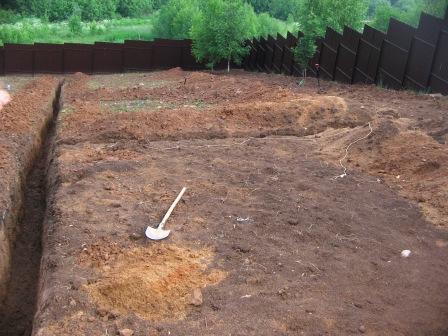
Since small seeds are very light, sowing is carried out in calm weather, deepening them with just one finger. After the sealing procedure, the area is tamped and well moistened from the sprayer. The optimal sowing rate is considered to be 1.5 g of seeds per 1 sq. m. For a more even distribution, experienced gardeners are advised to use a special seeder.
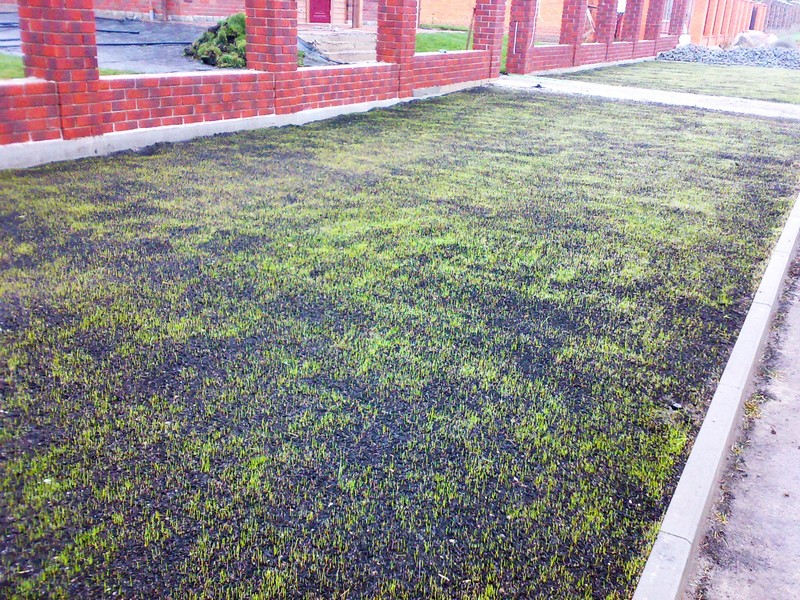
Watering and feeding
At the slightest lack of moisture, the lawn grass begins to dry and change color. To maintain its decorative qualities, it is irrigated daily with a sprinkler. If the bent grows in shady areas, watering is reduced to once every three days.
The cereal crop is fed twice a season:
- in the spring, organic or nitrogen-containing preparations are used;
- in the middle of summer, mineral complexes with a potassium-phosphorus composition are introduced.
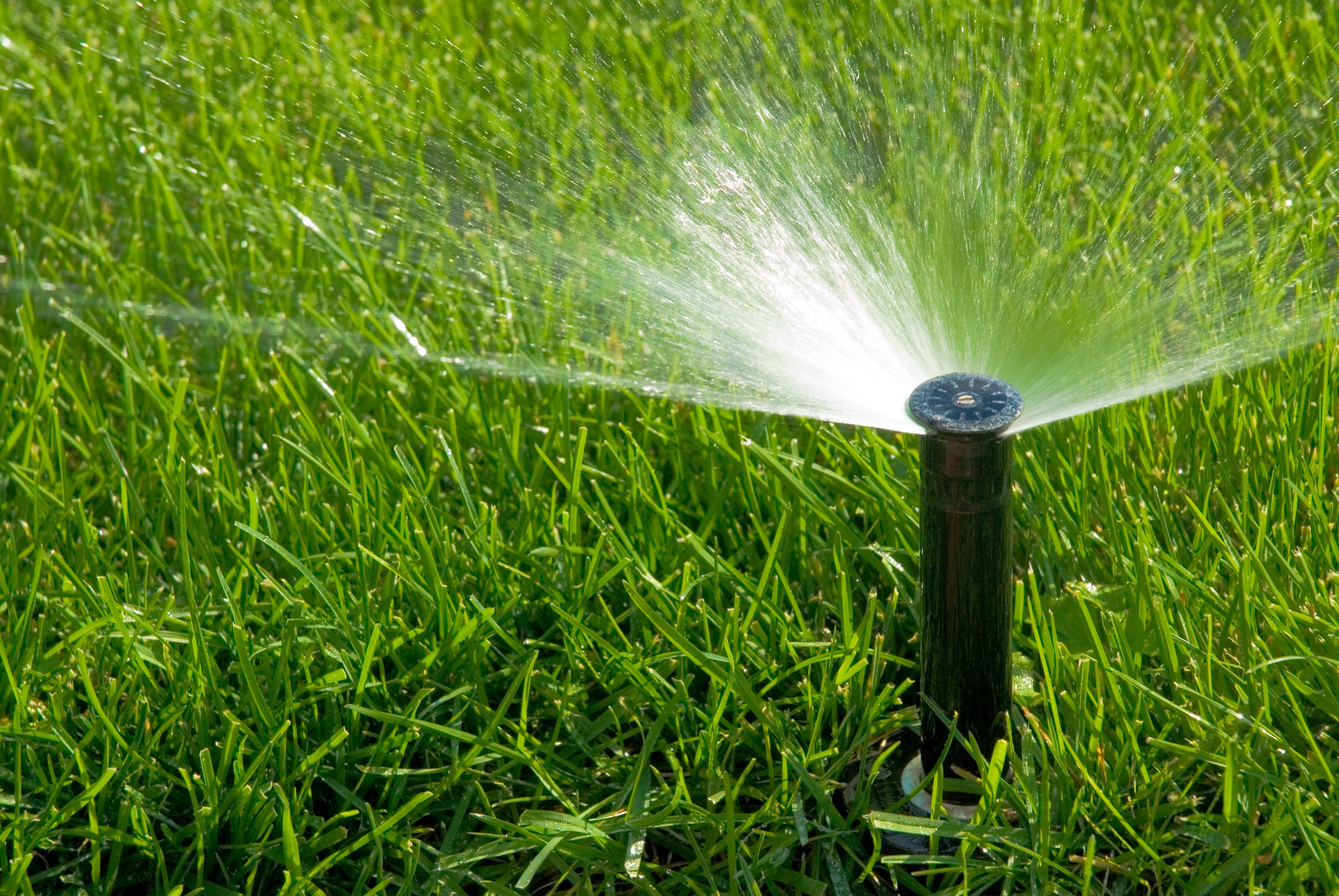
Mulching
The procedure is carried out in the second year after sowing, in the second decade of April. It is needed for better development of the root system of young animals, as well as for more active growth after winter.A soil mixture consisting of garden soil, peat and sand is used as a mulching layer. When preparing the substrate, they proceed from the proportions of 1: 1: 1.
Cutting and mowing
The mowing of the bent is carried out only with the help of a lawn mower. Due to the slow growth rate, mowing is carried out once a month, removing the top layer of the lawn. This will get rid of dry or damaged shoots, and also stimulate the emergence of young shoots.
Under the base, the grass is mowed only before wintering, ensuring the best germination in spring.

Wintering features
The shoot-forming field bent does not need shelter for the winter, even in severe frosts. Often, the lawn retains its green appearance, already under the snow cover. The frost-resistant culture tolerates low temperatures well and revives very quickly when warm comes. Sometimes in the spring, bald patches form on the site. However, there is no need to worry, since in just a month the young growth will cover the empty areas.
Reviews of summer residents
“I am a lawn gardener and often use the Cromie variety in my work. Of all types of lawn grasses, it is the most versatile. The grass does not require increased attention to itself, but at the same time forms a uniform, soft, dense carpet. "
“When the grandchildren appeared, the question arose of how best to arrange a playground for them in the yard. This is how the boulders appeared on our summer cottage playground. The grass is very resistant to trampling and holds up perfectly throughout the summer season without forming bald spots or other deformations. "
“I first heard about the field grass lawn when I was at the course of landscape designers. Since that time, I have only recommended it to my clients. The Cromi variety is especially good. It grows well, does not trample and tolerates a haircut perfectly. "
"The lawn for the lazy", as summer residents dubbed the escaping bent grass, is, in fact, a good find for lovers of green lawns. Simplicity and unpretentiousness allowed this herb to become a real favorite among gardeners throughout the Eurasian continent.

